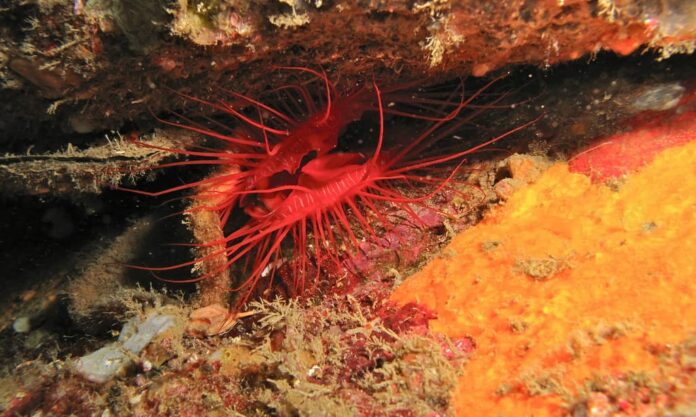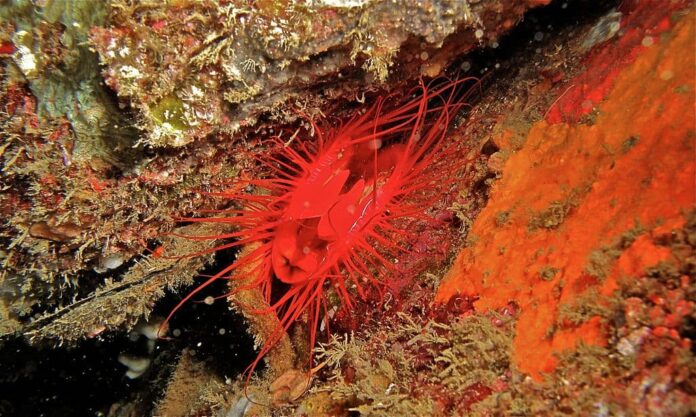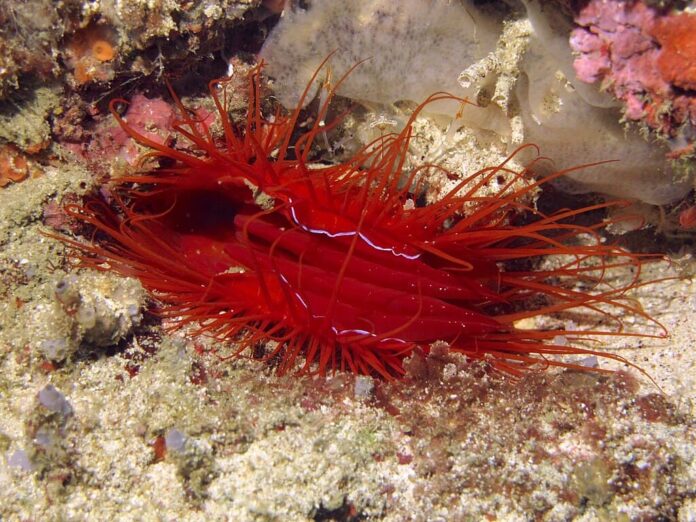What comes to your mind when you see the word electric fire clam? Perhaps, it makes you think that it has the same shocking ability like an electric eel? As a matter of fact, things are quite different with this unique marine bivalve. Being bright and dazzling is not the only feature that they have, and we shall find out more below.
1Appearance

An electric fire clam grows to a length of around 5 centimeters but there are larger ones that measure up to 10 centimeters. Its shells are usually mottle brown in color while the tentacles are bright red-orange. The tentacles grow out of the clam’s mantle, and they are often longer than the shell of the clam.
The fascinating appearance of this bivalve earns it many nicknames such as disco clam, electric clam, and electric flame scallop. Why disco clam though? That is because its soft tissues can flash light just like a disco ball. Those tissues are on the outer edge of their mantle, and they are highly reflective due to minute nano-spheres made of silica. The nano-spheres give the electric fire clam a brightly reflective glow that it can turn on and off at will.
2Behavior
Unlike the bioluminescence in many creatures that keeps glowing, these bivalves can put on their own show whenever they like. So whenever an electric fire clam spots a predator, it will flash the light to scare the intruder away. Another way to protect itself is by using its red mantle also contains foul-tasting peptide-like compounds. It can actually spray its acidic mucus at its predators as a defense mechanism. In case the predator won’t go away, the clam will escape by clapping its valves together to propel through the water.
Things are the same when it sees potential prey, this light is also to attract prey to come closer. Once the victim is near, it will paralyze the prey using mucus on its tentacles. The bright lightning bolt-like light is so handy, and that is definitely something you have never seen before.
3Feeding & Habitats

As filter feeders, the primary food source of the electric fire clams are plankton such as bacterioplankton and phytoplankton. It feeds by filtering water through its gills and siphons to trap plankton particles in its sticky mucus. Electric fire clam lives in warm tropical waters across the Indo-Pacific region including the north coast of Australia. If you are lucky, you might come across them when diving as they only live at depths of 3 to 50 meters. These clams like to hide inside small crevices between rocks and other debris on the ocean floor. This is to avoid predators such as cuttlefish, octopus, and other crustaceans and fish.
Related Post: Shellfish Types




